Dandelions may look cheerful with their bright yellow blooms, but for many gardeners and lawn care enthusiasts, they’re unwelcome guests. These resilient weeds spread quickly, taking over your lawn, outcompeting grass, and creating an uneven, patchy appearance.
If you’re tired of battling dandelions and want a lush, weed-free lawn, it’s time to take action. This guide will walk you through effective methods to get rid of dandelions in your lawn while ensuring your grass stays healthy and strong. We’ll explore why dandelions thrive, the best removal techniques, and how to prevent them from returning.
Whether you prefer natural, manual, or chemical solutions, we’ve got you covered with practical tips to help you reclaim your beautiful lawn.
What Makes Dandelions so Persistent?
Dandelions are more than just a nuisance—they’re incredibly hardy plants capable of thriving in even the most unfavorable conditions. Their deep taproots give them an edge, allowing them to access nutrients and water from deeper within the soil, something that other plants struggle to do.
This provides them with a survival advantage, especially during dry spells or times of limited rainfall. To make matters worse, dandelions produce numerous wind-dispersed seeds that can travel great distances, ensuring that even one plant can quickly spread across your entire lawn.
The seeds can land far from the parent plant, colonizing new areas and making eradication efforts even more challenging. Their adaptability allows them to grow in compacted soil, making them even harder to eliminate in areas with heavy foot traffic or poor soil conditions.
Additionally, dandelions are resilient to a wide range of climates, thriving in nearly every type of environment—from sunny spots to partially shaded areas. Their tolerance for a variety of growing conditions is a major reason why they are so persistent and difficult to control.
If you’re struggling to get rid of dandelions in your lawn, understanding their biology and growth habits is key to taking the right approach. To truly tackle these persistent weeds, you need to target their deep roots and prevent new seeds from taking root.
Manual Methods for Dandelion Removal
If you’re looking for a hands-on approach, manual removal is a great way to tackle dandelions without introducing chemicals to your lawn. Not only is it environmentally friendly, but it also allows you to target each weed individually, ensuring a more controlled method of elimination. Here’s how you can go about it:
1. Pulling by Hand
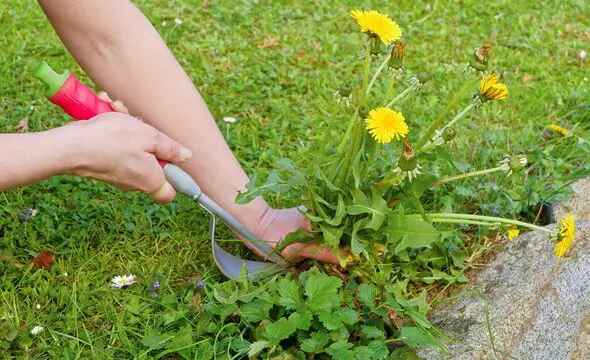
The most direct method of removing dandelions is pulling them out by hand. However, this requires precision because leaving behind even a small piece of the taproot can result in regrowth. The taproot can be deep and stubborn, so using a weeding tool or garden trowel to loosen the soil around the plant is essential to ensure you’re removing the entire root.
For the best results, it’s recommended to pull dandelions after a rainstorm or to water your lawn beforehand. Moist soil makes the process much easier, allowing you to remove the roots more effectively.
If you’re tackling a larger patch of dandelions, a dedicated dandelion removal tool can help you target the taproots more efficiently. It’s also important to check your lawn regularly and remove any new dandelions that sprout up, as they can quickly reseed and spread if left unchecked.
By making manual removal part of your regular lawn care routine, you can significantly reduce the number of dandelions over time and maintain a healthy, beautiful lawn.
2. Digging Tools

For more stubborn dandelions, investing in specialized weeding tools like a dandelion fork or weed puller can make all the difference. These tools are specifically designed to grip the taproot and allow you to remove it with minimal damage to the surrounding grass.
The long, narrow prongs of a dandelion fork are perfect for digging deep into the soil and extracting the entire root system, which is crucial for preventing regrowth. Using these tools ensures that you’re not just pulling the leaves and stems, but removing the whole plant from the root, which is the key to successfully getting rid of dandelions in your lawn.
You can typically find these tools at your local garden center, and they are relatively affordable and easy to use. To get the most effective results, make sure to loosen the soil around the dandelion before pulling the root. This makes it easier to extract the entire plant and helps you avoid breaking the root, which can cause the dandelion to regrow.
Regular use of these tools can greatly reduce the number of dandelions in your lawn, and when combined with other lawn care practices, will help you achieve a lush, weed-free yard.
3. Focus on Early Growth
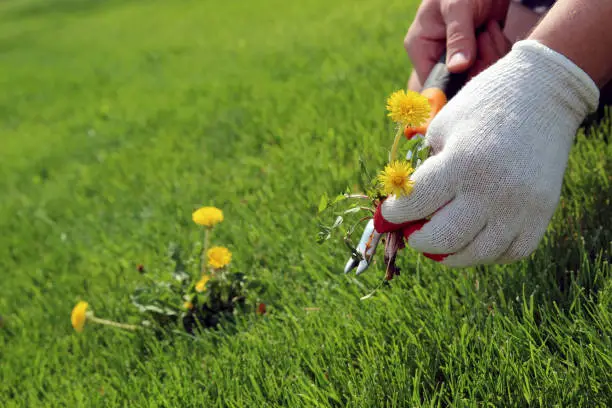
One of the most effective ways to get rid of dandelions in your lawn is by targeting them during their early growth stages, before they develop their iconic fluffy seed heads. At this point, the plants are still small and easier to remove, and eliminating them early prevents the seeds from spreading and causing additional infestations.
Regularly check your lawn in the early spring when dandelions begin to sprout, as catching them at this stage gives you the best chance to stop their growth before they can reproduce. Early removal not only reduces the number of dandelions but also helps you maintain a cleaner, healthier lawn.
However, manual removal may not be practical if you’re dealing with large infestations. In such cases, you’ll need to consider other methods, such as selective herbicides or other tools, to efficiently manage the problem. By focusing on early growth, you’ll be able to significantly reduce the number of dandelions in your lawn and keep your turf looking pristine.
Related Topics:
Organic Methods to Control Dandelions
For those wanting an eco-friendly solution, there are several organic methods that can effectively reduce dandelions without harming the environment or beneficial insects. Here’s one of the best natural methods:
1. Corn Gluten Meal

Corn gluten meal is a natural pre-emergent herbicide that works by inhibiting seed germination, making it an excellent option for preventing dandelions from taking root in your lawn. Applying corn gluten meal in early spring, just before dandelion seeds are set to germinate, can stop new dandelions from sprouting.
This method is particularly useful for long-term dandelion control, as it prevents the seeds from establishing in the first place. However, it’s important to note that corn gluten meal does not kill existing weeds or dandelions already growing in your lawn.
For best results, combine this technique with other methods like manual removal or digging tools to remove any established plants. By using corn gluten meal in combination with other strategies, you can effectively get rid of dandelions in your lawn while maintaining an eco-friendly approach.
2. Mulching
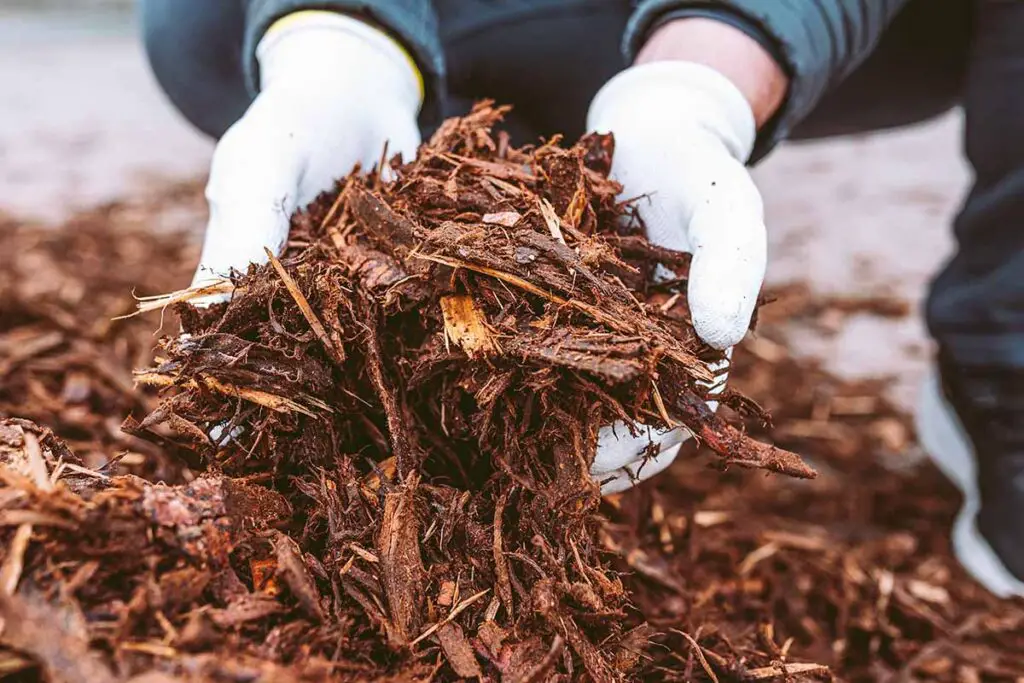
If dandelions are prominent in your garden beds or areas surrounding your lawn, applying a thick layer of mulch can be an effective eco-friendly solution. Mulch acts as a barrier, suffocating the plants by preventing sunlight from reaching them, which inhibits their growth.
A thick layer of mulch (about 2 to 3 inches) can be particularly beneficial in flower beds, vegetable gardens, or other areas where dandelions are commonly found. In addition to blocking sunlight, mulch also helps retain moisture in the soil, which can improve the overall health of your lawn and garden.
Keep in mind that you’ll need to apply fresh mulch annually, as it can break down over time. While mulch works wonders for preventing new dandelions from sprouting, it can be a bit less effective on mature plants.
Therefore, to truly get rid of dandelions in your lawn, it’s best to combine mulching with other methods, like manually removing established weeds or using organic herbicides. By integrating mulching into your lawn care routine, you’ll not only reduce dandelion growth but also create a healthier, more vibrant landscape.
3. Boiling Water
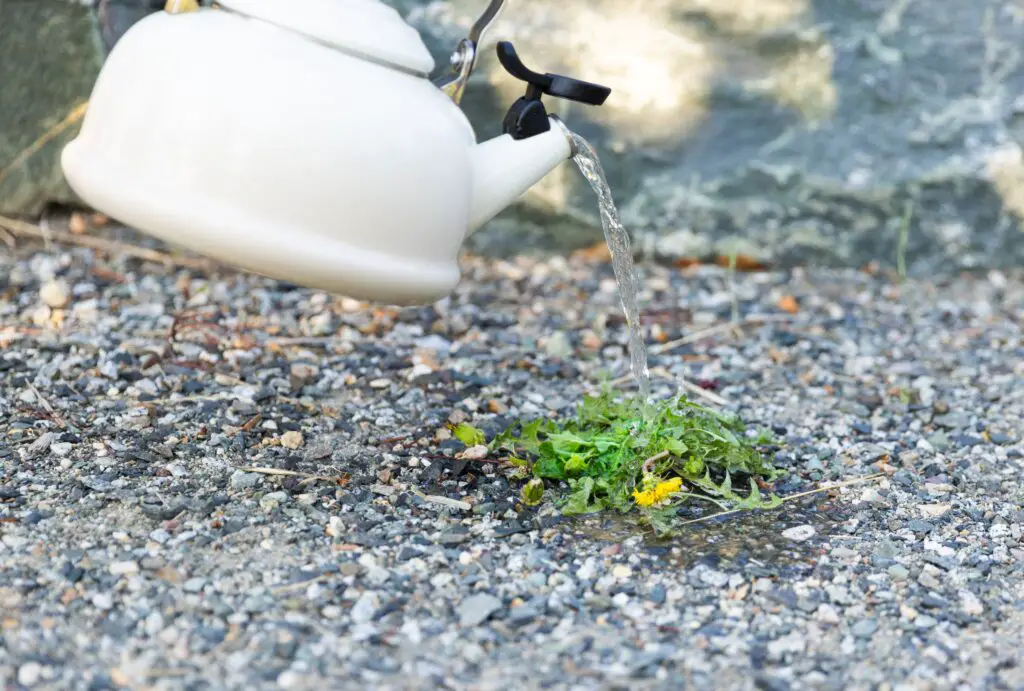
For small patches of dandelions, pouring boiling water directly onto the weeds can be an effective, simple solution. The hot water scalds the roots and foliage, effectively killing the plant. This method is particularly useful for targeting small, isolated groups of dandelions without harming the rest of your lawn.
However, it’s important to apply the water carefully, as it can also damage surrounding grass and desirable plants if spilled or splashed. To use boiling water effectively, carefully pour it around the base of the dandelions, making sure it doesn’t come into contact with your healthy lawn.
Because this method only works on the plants it directly touches, it’s best suited for dealing with a small infestation of dandelions rather than a large area. While boiling water is a highly effective way to get rid of dandelions in your lawn in targeted areas, it’s important to remember that organic methods like this are gentle on the environment and safe for pets and children.
However, consistent application over time may be necessary to see significant results, especially if the dandelions are well-established.
Chemical Herbicides for Dandelions
If dandelions have taken over your lawn and manual or organic methods aren’t enough, it may be time to consider using herbicides. While herbicides are a more aggressive option, they can provide effective results when used properly. Here’s what you need to know:
1. Selective Herbicides
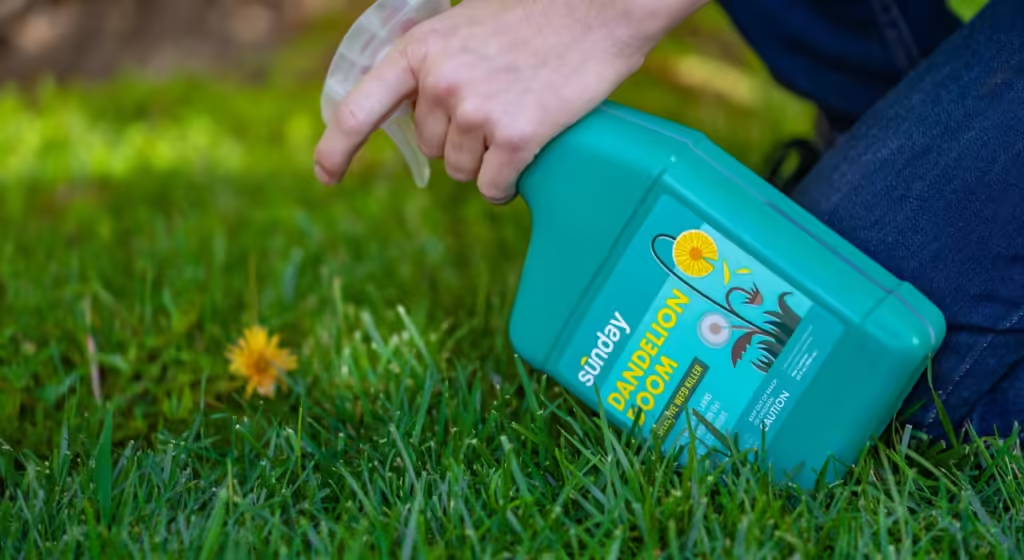
Selective herbicides are designed to target broadleaf weeds like dandelions while leaving your grass unharmed. These herbicides work by targeting the specific biology of broadleaf plants, killing them without damaging the surrounding turf. When selecting a herbicide, be sure to look for products that are labeled as safe for use on lawns.
It’s essential to follow the manufacturer’s instructions carefully when applying selective herbicides. Incorrect application, such as using too much product or applying it in the wrong weather conditions, can damage your lawn.
To achieve the best results, apply the herbicide when dandelions are actively growing, typically in the spring or early fall, when the plants are most susceptible. Selective herbicides can be an efficient way to get rid of dandelions in your lawn, especially if you have a large infestation or if other methods haven’t worked.
However, always keep in mind that herbicides should be used as part of an integrated lawn care strategy to maintain a healthy, beautiful lawn.
2. Spot Treatments
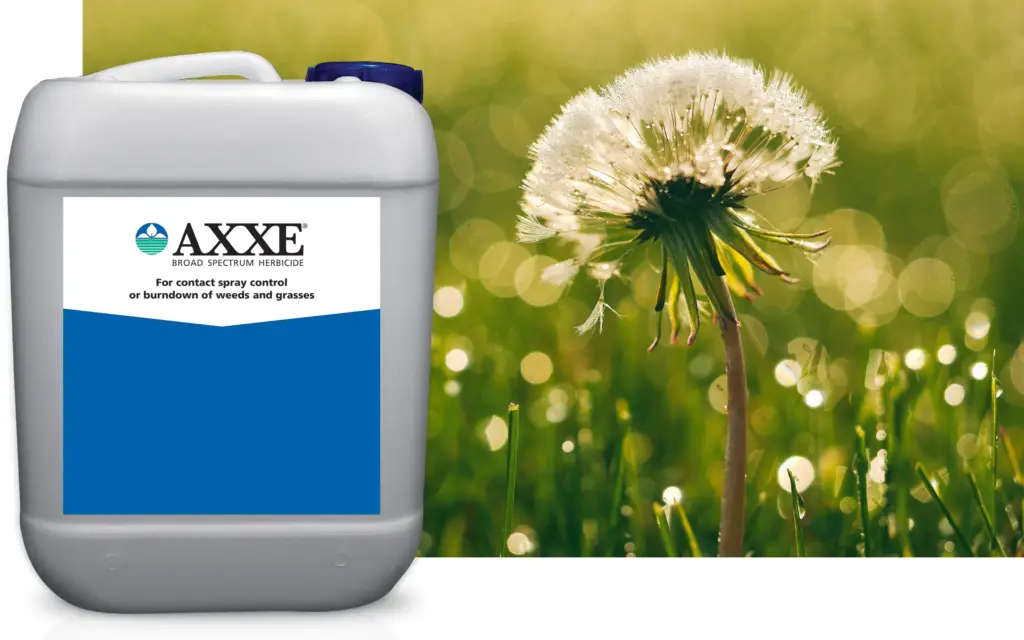
For isolated dandelions or small patches of weeds, spot treatments are a great way to target the problem without using excessive chemicals. By using a spray bottle or applicator, you can apply herbicide directly to the leaves of the dandelions, minimizing chemical usage and reducing the risk of damaging surrounding grass and plants.
Spot treatments are especially effective for preventing the spread of dandelions in areas where the infestation is localized. They allow you to focus treatment only on the weeds you want to eliminate, making them a more precise and eco-friendly approach than broadcasting herbicide over large areas.
When applying herbicide as a spot treatment, it’s crucial to be accurate with your application. Use a handheld spray bottle with a fine mist to ensure that only the dandelions are affected. This method can help you get rid of dandelions in your lawn without harming other vegetation, giving you greater control over your lawn care routine.
For the best results, apply the herbicide when the dandelions are actively growing, and avoid spraying on windy days to prevent drift to other plants
3. Timing is Key
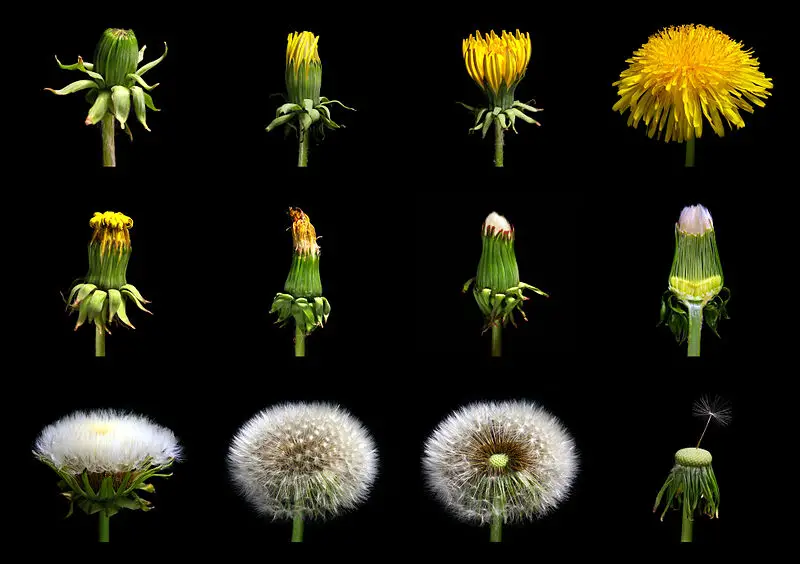
The timing of herbicide application plays a crucial role in its effectiveness. The best time to apply herbicides is during the fall, when dandelions are actively storing nutrients in their roots in preparation for winter. This is when the plants are most vulnerable, as they are moving nutrients and water deeper into the root system.
By applying herbicide at this time, it is absorbed into the roots, providing a more effective kill and reducing the chances of regrowth. Fall applications can help target dandelions at their most susceptible stage, leading to more thorough control of the weed.
However, it’s important to apply the herbicide on a day when the weather is mild and there’s no rain forecasted for 24-48 hours to ensure the product has time to work. While herbicides can offer quick and noticeable results, it’s essential not to overuse them.
Excessive chemical application can harm your lawn, disrupt the local ecosystem, and affect non-target plants. To get rid of dandelions in your lawn safely and effectively, always use herbicides judiciously and follow the manufacturer’s instructions carefully to avoid unintended consequences.
Preventing Dandelions from Returning
Once you’ve removed the dandelions, your next step is to ensure they don’t come back. Prevention is essential for long-term lawn health and reducing the chances of future infestations. Here’s one of the best ways to keep your lawn dandelion-free:
1. Improve Soil Health

Healthy, nutrient-rich soil is key to encouraging strong grass growth, which in turn helps crowd out weeds like dandelions. When your soil is well-balanced, your grass will be better equipped to compete with weeds for nutrients, light, and space.
Regular soil testing is an excellent way to monitor the health of your lawn, as it allows you to identify any nutrient deficiencies or imbalances that may be encouraging weed growth. Once you have your soil tested, you can amend it with the necessary nutrients.
Adding organic compost improves soil structure, enhances nutrient availability, and boosts beneficial microorganisms that promote healthy root growth. Lime can help balance the pH level of your soil if it’s too acidic, creating an environment that’s more conducive to healthy grass and less inviting for weeds like dandelions.
By focusing on improving your soil, you create a lawn that is not only more resistant to weeds but also healthier and more resilient overall. This is an effective way to get rid of dandelions in your lawn and prevent them from taking over in the future.
2. Maintain Lawn Density
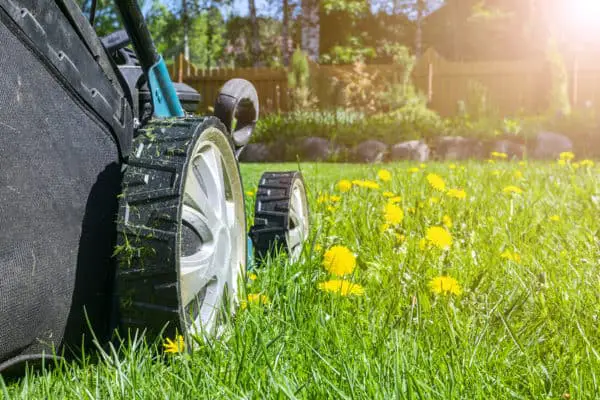
A thick, dense lawn is one of the most effective natural defenses against dandelions. When your grass grows thick and strong, it crowds out weeds by leaving little space for them to take root. Regular maintenance practices are essential to ensure your lawn remains dense and healthy.
Start with regular mowing at the proper height for your grass type, typically around 2 to 3 inches. This helps the grass grow vigorously and shades the soil, making it more difficult for weeds like dandelions to germinate. Avoid cutting your grass too short, as this can weaken it and allow weeds to thrive.
Aerating your lawn is another important step in promoting grass density. Aeration helps alleviate soil compaction, allowing air, water, and nutrients to reach the roots more effectively. This creates optimal growing conditions for your grass, making it harder for dandelions to establish themselves.
Overseeding is also crucial, especially in areas where grass may be thinning. By adding new grass seed, you encourage a fuller lawn that leaves less room for weeds. This is a great way to improve lawn density and prevent dandelions from taking hold.
By practicing proper lawn care, you’ll not only get rid of dandelions in your lawn but also create a lush, vibrant yard that naturally resists weed growth.
3. Mow at the Right Height
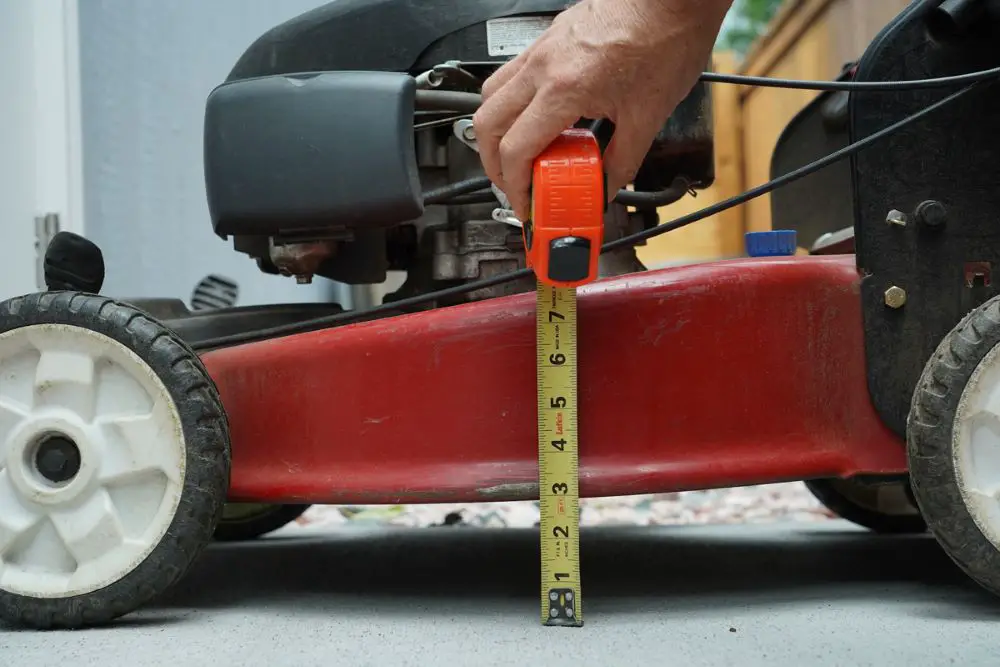
Mowing your lawn at the proper height is one of the simplest yet most effective ways to promote healthy grass and prevent dandelions from returning. Set your mower blades to a height of 2.5 to 3 inches, which is ideal for most grass types.
Taller grass not only looks better but also competes more effectively with weeds by shading the soil and blocking sunlight, making it harder for weeds like dandelions to germinate and grow. By allowing your grass to grow taller, you encourage deeper root development, which helps the lawn stay strong and resilient.
Additionally, longer grass can outcompete dandelions by taking up more space, water, and nutrients. It’s important not to cut more than one-third of the grass height at a time, as cutting it too short can stress the grass, weaken its growth, and provide room for weeds to take hold.
When you mow at the right height, you not only help get rid of dandelions in your lawn but also improve the overall health and appearance of your yard. Regular mowing at the optimal height is an easy way to keep your lawn lush and weed-free.
4. Fertilize Smartly
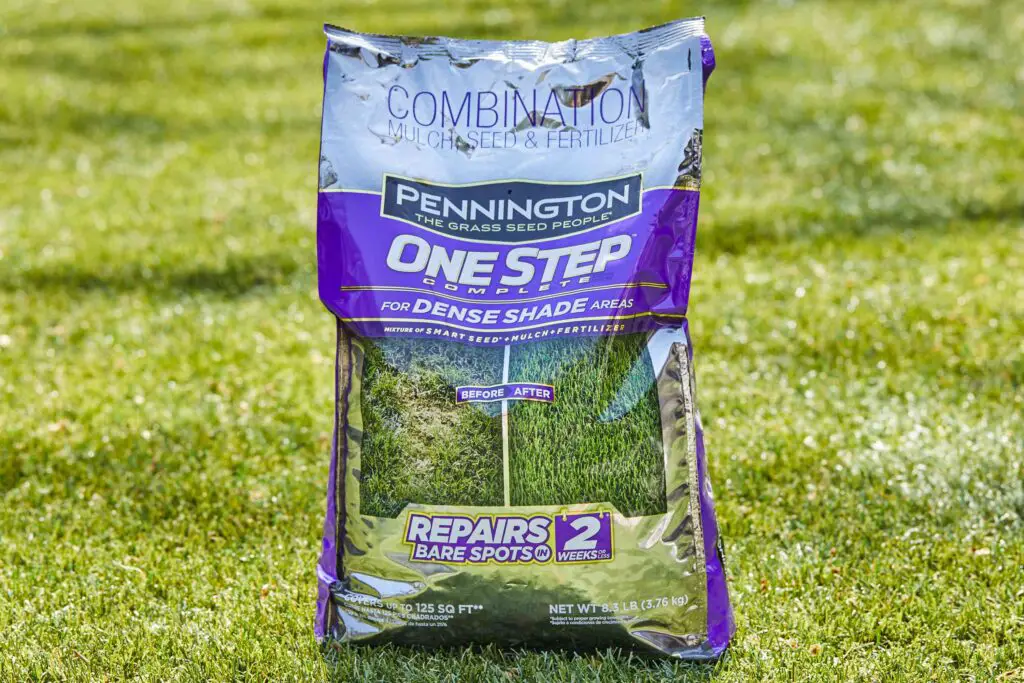
Fertilizing your lawn correctly is key to keeping your grass strong and healthy, which in turn helps to prevent dandelions from regrowing. Apply a slow-release fertilizer to nourish your grass throughout the growing season.
Slow-release formulas provide a steady supply of nutrients over time, ensuring that your grass receives the nourishment it needs for consistent growth. Strong, healthy grass is naturally less susceptible to weed invasions, including dandelions. Make sure to fertilize in the spring and fall when your grass is actively growing.
Be mindful not to over-fertilize, as this can encourage excessive growth that is vulnerable to pests and disease. Also, make sure to use a fertilizer that is appropriate for your soil type and grass variety, as different grass types have different nutrient needs.
Fertilizing smartly not only helps your lawn grow stronger but also supports its ability to crowd out weeds. While preventive measures like this may require ongoing effort, they create a lawn environment over time that discourages dandelion regrowth and reduces the likelihood of future infestations. This proactive care will help you get rid of dandelions in your lawn and keep them from returning.
Frequently Asked Questions
Can dandelions be beneficial for a lawn?
Believe it or not, dandelions do have some surprising benefits for your lawn and garden. While they are often viewed as a nuisance, these resilient plants contribute to your soil in a few unique ways. One of the primary benefits of dandelions is their deep taproots, which help aerate compacted soil.
As they grow, their roots break up heavy, compacted soil, allowing air, water, and nutrients to penetrate deeper into the earth. This can improve soil structure, making it easier for grass to establish deep roots and grow more vigorously.
Additionally, dandelions are often referred to as “nature’s tillers” because they can bring nutrients up from deeper soil layers and deposit them on the surface when they die back. Dandelions also play a role in attracting pollinators, especially bees.
Their bright yellow flowers provide a reliable source of nectar in the early spring, when other flowers may not yet be blooming. This makes dandelions an important resource for local pollinator populations.
However, despite these benefits, many lawn care enthusiasts prefer to get rid of dandelions in your lawn because of their invasive nature. Their ability to spread quickly and overtake large areas of grass often outweighs their positive contributions, particularly for those striving for a neat, uniform lawn.
How long does it take to remove dandelions completely?
The time it takes to remove dandelions from your lawn completely depends on several factors, including the severity of the infestation and the methods you use. If you’re dealing with a small number of dandelions, manual removal or organic methods may take a few weeks to see noticeable results. However, if the infestation is extensive, it can take months to fully eliminate them.
Manual and organic approaches, such as hand-pulling or using natural herbicides, may require consistent effort over time. Organic methods like mulching or applying corn gluten meal might take longer to show significant results as they focus more on prevention and gradual removal.
On the other hand, herbicides tend to provide faster results. If you use a selective herbicide, you may start to see visible effects within just a few weeks. However, it’s important to remember that herbicides alone may not address the root cause of the problem, and dandelions can return if proper prevention measures aren’t taken.
The most effective way to get rid of dandelions in your lawn is to combine removal efforts with long-term prevention strategies. Improving soil health, maintaining lawn density, and practicing proper lawn care can help ensure that dandelions don’t return after initial removal. This integrated approach offers the best chance for lasting results.
Is using vinegar effective against dandelions?
Yes, household vinegar can be effective in killing dandelions by dehydrating their leaves, leading to the plant’s eventual death. The acetic acid in vinegar acts as a desiccant, drawing moisture out of the leaves and causing them to dry up. This method can be a quick, non-toxic solution for small patches of dandelions or individual plants.
However, it’s important to use vinegar cautiously. While it can kill dandelions, vinegar can also harm surrounding grass and other desirable plants if it’s not applied carefully. Vinegar is a non-selective herbicide, meaning it doesn’t distinguish between weeds and grass, so it can damage your lawn if sprayed indiscriminately. To minimize harm, apply vinegar directly to the leaves of the dandelions using a spray bottle or targeted applicator, and avoid spraying on windy days to prevent drift.
While vinegar can help get rid of dandelions in your lawn, it may not eliminate the entire root system, and dandelions may regrow if their roots are left intact. For best results, consider combining vinegar with other removal methods or use it as part of an integrated weed management plan.
Eliminating dandelions and maintaining a lush, weed-free lawn takes effort, but it’s entirely achievable with the right approach. Whether you opt for manual removal, eco-friendly organic solutions, or targeted herbicides, the key to success is consistency.
By staying proactive and applying the appropriate methods at the right time, you can make significant progress in reducing dandelion growth. In addition to removal, investing in regular lawn maintenance and adopting preventive practices—like improving soil health, maintaining lawn density, and mowing at the right height—creates an environment where your grass can thrive, and dandelions can’t.
The effort you put into maintaining your lawn will not only get rid of dandelions in your lawn but will also result in a healthier, more resilient turf that can resist future weed invasions. Take control of your lawn today and enjoy the satisfaction of a beautifully manicured, dandelion-free yard—one that will be the envy of your neighbors!

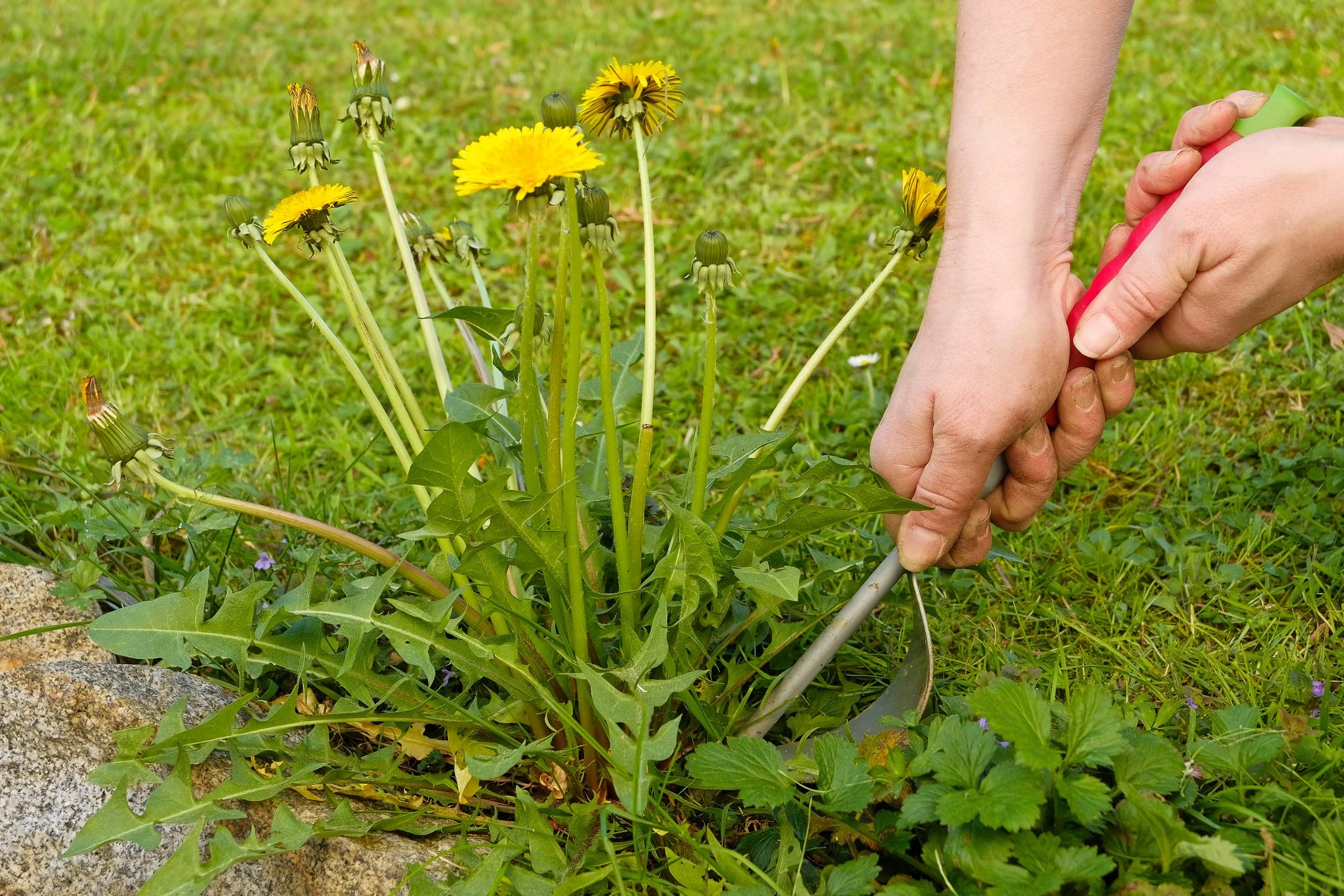
2 thoughts on “How to Get Rid of Dandelions in Your Lawn: Weed-Free!”